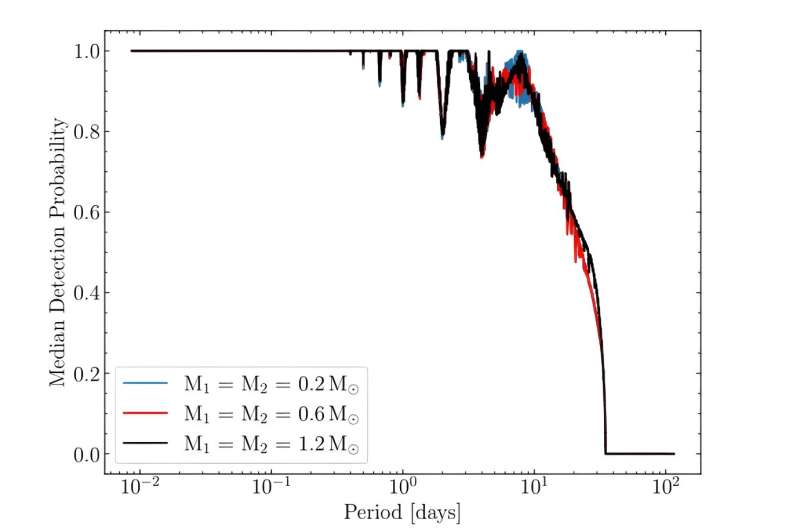July 11, 2024 report
This article has been reviewed according to Science X's editorial process and policies. Editors have highlighted the following attributes while ensuring the content's credibility:
fact-checked
preprint
trusted source
proofread
Astronomers discover dozens of double-lined double white dwarf binaries

An international team of astronomers reports the discovery of 34 rare double-lined double white dwarf binary systems using the Intermediate-dispersion Spectrograph and Imaging System (ISIS) on the William Herschel Telescope (WHT). The finding was detailed in a research paper published on the preprint server arXiv.
Astronomers are interested in finding and studying double white dwarfs (DWDs), as their mergers are believed to produce new white dwarfs with higher masses. It is assumed that some high-mass white dwarfs in the solar neighborhood could be DWD merger products.
So far, the majority of binaries, including DWDs, have been detected by Doppler shifts in their spectral lines; hence, these systems are called spectroscopic binaries. Observations show that in some spectroscopic binaries, spectral lines from both stars are visible, and these lines are alternately double and single. These systems are known as double-lined spectroscopic binaries (SB2).
The number of known SB2 white dwarf systems with well-measured mass and orbital parameters is still relatively small. Finding new objects of this type could be crucial in order to advance our knowledge about double white dwarfs in general.
A group of astronomers led by James Munday of the University of Warwick, UK, has inspected 117 DWD binary candidates with ISIS, hoping to confirm their SB2 DWD nature.
"Our search of 117 candidates that were randomly selected from a magnitude limited sample of 399 yielded a 29 percent detection efficiency with 34 systems exhibiting a double-lined signature," the researchers wrote in the paper.
The detected SB2 DWDs have masses ranging from 0.85 to 1.55 solar masses, and orbital periods between 0.4 and 13.5 days. All these systems are located within 580 light years from Earth with the nearest at a distance of only 83 light years.
The observations found that the masses of the hotter component in the reported binaries range from 0.4–0.75 solar masses with a median mass of about 0.53 solar masses. The colder companions have a median mass of approximately 0.45 solar masses.
The authors of the paper noted that the most massive of the detected double-lined DWDs, designated WDJ181058.67+311940.94, exceeds the so-called Chandrasekhar limit—the maximum mass of a stable white dwarf star, which is generally accepted to be about 1.4 solar masses.
Therefore, it is expected that this system, located some 160 light years away, may experience in the near future a Type Ia supernova explosion or it may merge to form an ultra-massive white dwarf. However, further observations of this system are required in order to provide time estimates regarding its fate.
More information: James Munday et al, The DBL Survey I: discovery of 34 double-lined double white dwarf binaries, arXiv (2024). DOI: 10.48550/arxiv.2407.02594
Journal information: arXiv
© 2024 Science X Network





















